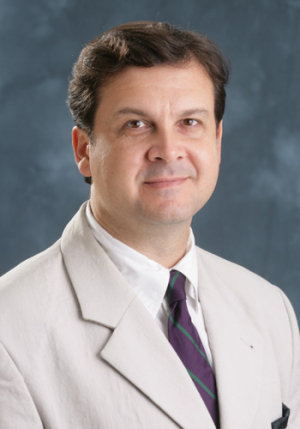Malaria has been one of the world’s biggest killers for as long as records have been kept (and almost certainly longer). According to the World Health Organization, in 2008 alone the disease claimed approximately 881,000 lives, making it responsible for approximately 1.5% of all deaths worldwide. That year it was responsible for more than 5.2% of all deaths in low-income countries and a startling 20% of childhood deaths in Africa.
Almost as startling is that those figures could rise in coming years. Plasmodium, the parasite that causes the disease, has shown increasing resistance to existing antimalarial drugs, meaning that even many of those who get treatment for the disease could end up victims.
This has led to a push to find new ways to fight malaria. Two faculty members in the University of Houston Cullen College of Engineering have recently been awarded a grant to create an entirely new platform for developing antimalarial drugs.
Jeffery Rimer and Peter Vekilov, both with the Department of Chemical and Biomolecular Engineering, received a two-year, $150,000 seed grant from the U.S. Department of Defense and administered by the Alliance for NanoHealth to conduct this research.
Like existing antimalarial drugs, this new platform will kill the parasite by utilizing a quirk in the infection process.
Plasmodium is typically introduced into hosts through a mosquito bite. It then enters the host’s red blood cells, where it consumes hemoglobin by breaking the macromolecule into smaller constituents.
One subunit of hemoglobin the parasite cannot use, however, is heme. Left alone, heme is highly toxic. Toxic enough, in fact, to kill the parasite and prevent an infection from taking hold.
Unfortunately, this is not how the situation plays out.
“The parasite has evolved. It segregates the heme into little crystals about one micron in size. If the heme is sequestered in crystals it can’t kill the parasite,” Vekilov said.
Existing antimalarial medications presumably work by preventing the formation and/or growth of heme crystals. As a result, heme molecules released by hemoglobin consumption are able to kill the parasite.
Exactly how these drugs prevent crystal formation is unknown, though. Vekilov and Rimer’s work revolves around uncovering the process of heme crystal formation and then determining what kind of molecules could inhibit crystallization.
Vekilov believes that heme molecules attach to crystals at kinks, sites on the crystal surface that are favorable for the addition of new heme molecules.
If this is in fact how heme crystals grow, Vekilov and Rimer will design “tailored inhibitors” that prevent the growth from occurring. “A tailored inhibitor mimics the crystal building unit or units, which in this case is heme,” said Rimer. “You want to design inhibitors with an affinity for binding to crystal surfaces. Certain parts of the inhibitor molecule then blocks adjacent binding sites. So the inhibitors we plan to design will physically block the kinks and disrupt heme addition.”
Vekilov and Rimer noted that this research likely will not result in the discovery of specific molecules that could be developed into medications. Instead, it will provide a deeper understanding of the type of molecules that could be the basis of new drugs. By helping drug developers understand how these medications could work, it will allow them to create new antimalarial drugs in a more logical and cost-efficient manner, said Rimer.
“What doesn’t exist right now are heuristic guidelines for how to design these drugs,” said Rimer. “Everything is done using combinatorial methods, wherein pharmaceutical companies screen libraries of molecules to identify drug targets. If we understand how these molecules bind to the crystal surface, however, we could start thinking about designing antimalarial drugs in a much more rational manner.”

